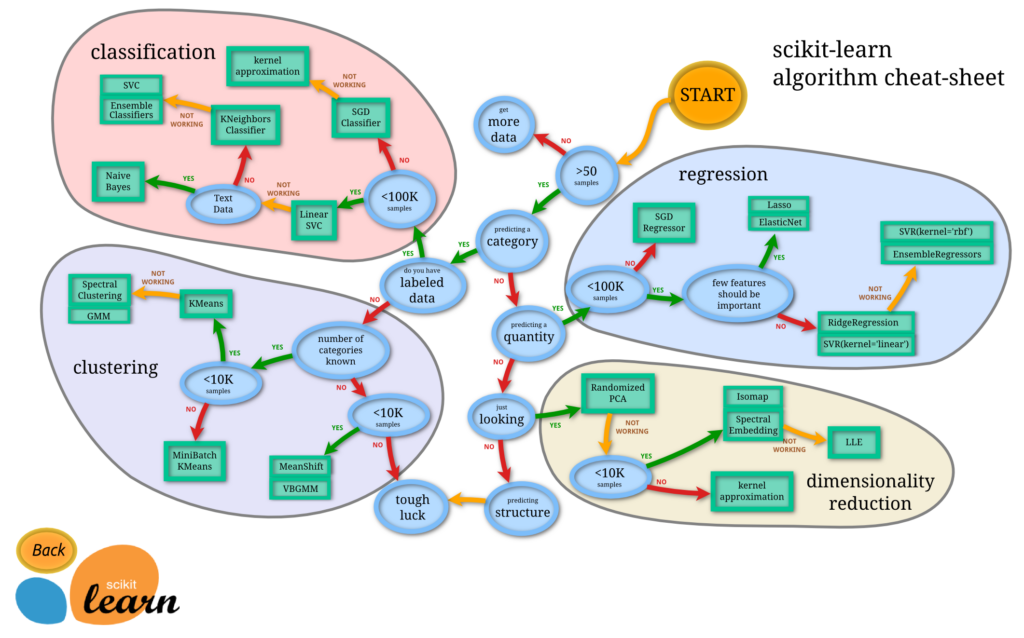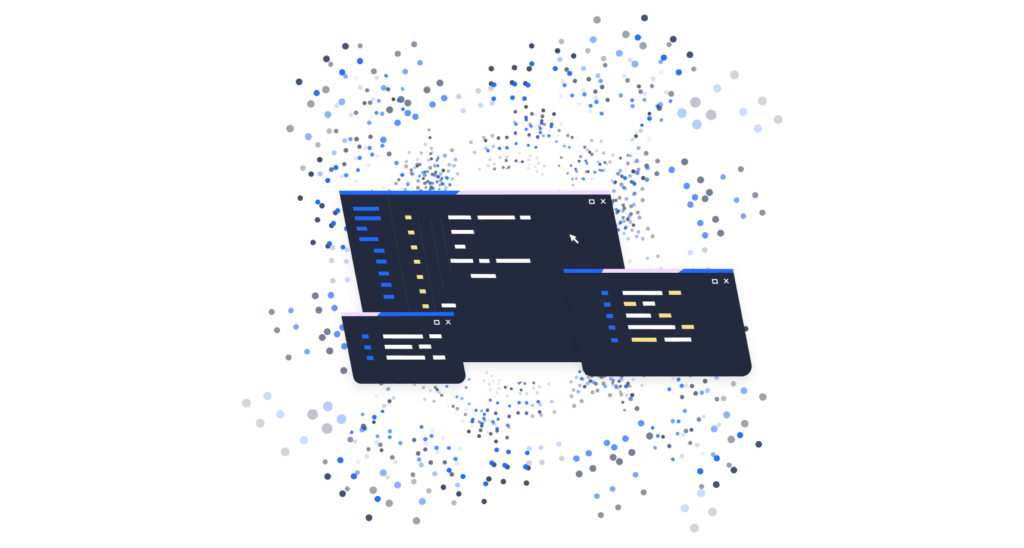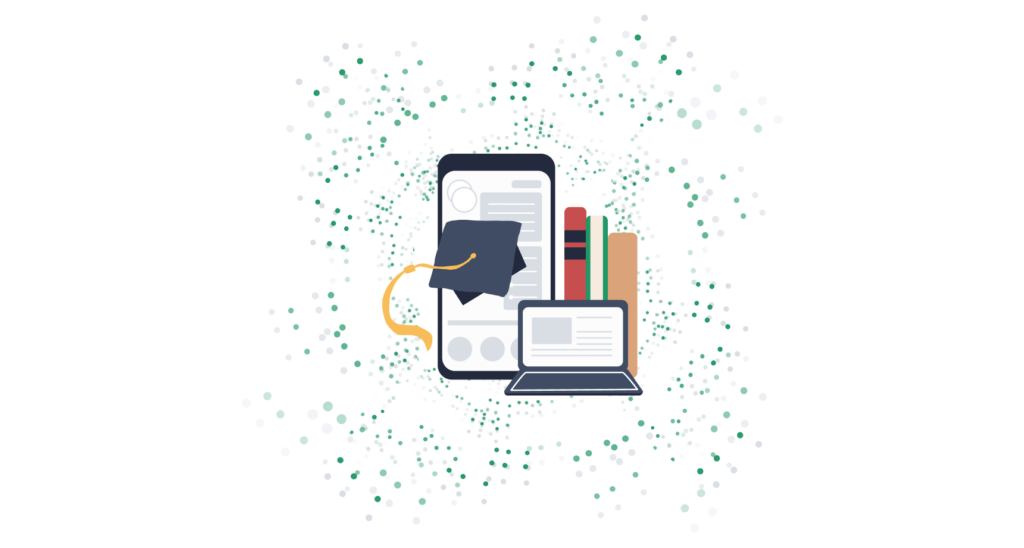What Is Scikit-learn and How Is It Used in AI?
If you're a Python developer looking to enhance your AI toolkit, then scikit-learn is your ticket to developing some seriously powerful machine learning solutions. I can promise you that dealing with tasks like classification, regression, and clustering become much simpler with this library. When I first started using scikit-learn, I almost cried thinking about all the hours I had previously sunk into preparing my data for machine learning. But once I added it to my arsenal of Python tools, many of my complex data science workflows were streamlined, and I saw a significant boost to my productivity.
So, why get excited? In a nutshell, scikit-learn is a collection of tools that allow you to quickly build and deploy machine learning models in Python. You can use it for all kinds of AI applications, from image recognition to predictive analytics. Its "secret sauce" is that it takes care of a lot of the complicated underlying math, so you can focus on the high-level functionality.
These days, it's is a must-have in any Python developer's toolkit. As AI becomes embedded in everything, companies increasingly expect developers to be well-versed in machine learning.* On top of that, the demand for Python skills in general just keeps growing.*
In the rest of this post, we'll take a closer look at how this extremely popular library works and how you can start using it for your projects. We'll cover its key components, walk through some common use cases, and discuss some of the challenges you might encounter. Finally, we'll gaze into our crystal ball and make some predictions about the future of scikit-learn based on an interview with one of its co-founders, Gaël Varoquaux. Let's get started!
What Is Scikit-learn?
It's an open-source Python library that makes machine learning more accessible by offering a wide range of tools for both supervised and unsupervised learning.* With it, tasks like data analysis and predictive modeling become much, much easier!
So, what can you do with it? The possibilities are quite extensive.

Key features
- Classification, regression, and clustering algorithms
- Dimensionality reduction techniques
- Model selection and evaluation utilities
- Data preprocessing tools
One of the best things about this library is how seamlessly it integrates with the rest of Python's data science stack. This synergy enhances its functionality and ease of use.
As a result, it has become a fundamental tool for applying machine learning in Python due to its simplicity, efficiency, and tight integration with NumPy, SciPy, and Matplotlib. Its intuitive interface and excellent documentation have made it a go-to library for teaching machine learning and a reliable tool for applying machine learning to real-world problems in both industry and academia.*
The library's robustness and flexibility have made it indispensable across industries, from finance to healthcare. The increasing demand for predictive AI and data-driven decision making has highlighted scikit-learn's crucial role in digital transformation and business strategy alignment.*
So whether you're a beginner just starting out or an experienced practitioner, this library has something to offer everyone. Its comprehensive documentation and supportive community make it easier to get up to speed as you master its capabilities.
Give it a try and see how it can level up your machine learning projects!
How Does Scikit-learn Work?
At its core, it provides a set of powerful, intuitive tools that handle everything from preparing your data to training and evaluating your models. Let's take a closer look at what makes this library tick.
A Modular, Flexible Toolkit
One of the things I like most about scikit-learn is how flexible it is. The library is designed to be modular, which means it's made up of different building blocks that you can use independently or snap together like Legos. These building blocks include tools for:
- pre-processing your data*
- a wide variety of estimators for training machine learning models*
- evaluating how well your models perform*
This modular design makes it easy for developers to customize their machine learning solutions.
A Tried-and-True Workflow
Another great thing is that it provides a standardized workflow. Whether you're building a spam filter or an image classifier, you'll follow the same basic steps:
- Load your data
- Preprocess it to get it ready for analysis
- Train your machine learning model
- Evaluate the results to see how well your model performs
Having a consistent process like this is really helpful, especially when you're just getting started with machine learning.
Plays Well with Others
Scikit-learn is also designed to integrate seamlessly with other key Python libraries like NumPy and Pandas. This is a huge advantage, because it means you can leverage the strengths of those libraries to analyze and manipulate your data more efficiently. It's like having a whole team of data science superheroes working together!
Real-World Ready
Of course, this isn't just a toy for tinkering―it's a serious tool that's used every day to solve real problems. For example, you could use it to build a system that automatically filters out spam emails. Or you could create a program that can look at an image and identify the different objects in it, like cars, trees, or buildings. With this library, the possibilities are endless.
Approachable for All
Perhaps best of all, the scikit-learn team has worked hard to make the library accessible to everyone. Whether you're a machine learning newbie or a seasoned pro, you'll appreciate its well-documented API and extensive collection of tutorials.* And with a wide variety of algorithms covering everything from classification to dimensionality reduction, this awesome library has a ton of tools to tackle just about any machine learning task.*
So there you have it―a quick tour of what makes scikit-learn such an essential part of the data scientist's toolkit. With its powerful features and user-friendly design, it's no wonder it's often the first stop for anyone looking to do machine learning in Python. Why not give it a try and see what you can create?
Scikit-learn Use Cases
Scikit-learn isn't just an essential tool for data scientists―it's a powerhouse library that's driving innovation across various industries. From healthcare and finance to marketing and research, companies are harnessing the power of scikit-learn to build cutting-edge machine learning solutions. Let's take a closer look at some of the exciting applications of scikit-learn in the real world.
Transforming Healthcare with Faster Drug Discovery

In the healthcare industry, scikit-learn is revolutionizing drug discovery. By using machine learning algorithms to predict how chemical compounds will interact with target proteins, companies like Atomwise are identifying promising drug candidates faster than ever before. This accelerated process is helping to address diseases more quickly and reduce costs in pharmaceutical R&D.
Enhancing Fraud Detection in Finance

For financial institutions, scikit-learn is a vital tool in the fight against fraud. Companies like J.P.Morgan leverage scikit-learn's powerful algorithms to analyze vast amounts of transaction data and identify unusual patterns that could indicate fraudulent activity.* By catching fraud faster, these institutions can reduce losses and maintain customer trust.
Powering Personalized Marketing

Scikit-learn is also transforming the world of marketing by enabling hyper-personalized customer experiences. Companies like Spotify and Booking.com use scikit-learn to build sophisticated recommendation engines that suggest products or content tailored to each user's preferences.* * By leveraging scikit-learn for customer segmentation and predictive modeling, marketers can deliver the right message to the right audience at the right time.
Accelerating Scientific Research

In the realm of scientific research, scikit-learn is helping to push boundaries and make groundbreaking discoveries. From analyzing complex datasets in physics and astronomy to developing predictive models in fields like genomics and neuroscience, Inria researchers rely on scikit-learn's versatile tools to extract insights and drive innovation. By streamlining data analysis workflows, scikit-learn allows scientists to focus on what they do best: asking big questions and uncovering new knowledge.*
These are just a few examples of how scikit-learn is being used to solve real-world problems and drive progress across industries. As more companies recognize the power of machine learning, scikit-learn will undoubtedly continue to play a crucial role in shaping the future of data-driven innovation.
Challenges and Considerations in Using Scikit-learn
Before using it, it's important to understand its limitations and the ethical considerations surrounding its use. While it's an undeniably powerful tool, it has some notable drawbacks that every data scientists should be aware of.
On the technical side, scikit-learn faces challenges due to:
- Limited support for deep learning tasks
- Difficulty handling high-dimensional data effectively
- Scalability issues when working with very large datasets
- Cumbersome integration with some industry tools
These limitations can impact performance on complex tasks like image recognition or natural language processing, which often require more advanced techniques. Models may also struggle to scale efficiently in big data environments.
However, the ethical implications of using scikit-learn are perhaps even more significant. One major concern is the potential for algorithmic bias in the models created with this library. If not carefully managed, these biases can lead to unfair or discriminatory outcomes, particularly in sensitive domains like healthcare.
Imagine a hospital using a model to predict patient risk levels. If that model was trained on data that underrepresented certain demographics, it could systematically underestimate the risk for those groups, leading to inadequate care.
The scikit-learn community has been grappling with these issues of bias and fairness, but there are no easy answers. Efforts to make models more interpretable and transparent are crucial for mitigating these risks and ensuring accountability.*
As a data scientist using scikit-learn, it's vital to be aware of these challenges. Understanding the library's limitations can help you develop strategies to work around them. And always considering the ethical dimensions of your models is essential for using machine learning responsibly. With the right awareness and precautions, scikit-learn remains an indispensable tool―but one that should be wielded thoughtfully.
Future Outlook for Scikit-learn
Scikit-learn is poised to maintain its significant influence in the AI landscape. How? By introducing advancements that will enhance scalability, integrate deeper with deep learning frameworks, and improve model interpretability. Let's take a closer look at what this means for businesses using scikit-learn.
Scaling Up and Integrating Seamlessly
As data volumes continue to grow, future versions of scikit-learn are expected to offer greater scalability. This will allow companies to efficiently handle larger datasets. Additionally, more seamless integration with deep learning libraries like TensorFlow and PyTorch is on the horizon. The benefit of enhanced integration is that it will make it easier to create sophisticated AI models that leverage both classic machine learning techniques and cutting-edge deep learning approaches.
Improving Model Interpretability
As machine learning models become integral to more business processes, there's a growing demand for transparency. Scikit-learn is likely to focus on developing better tools for model interpretability. This will help data scientists refine their models and enable industries to comply with regulations that require explainable AI.*
Generating Synthetic Data
Scikit-learn's expansion into generative AI techniques could revolutionize how businesses approach data synthesis and augmentation. By generating synthetic data, companies can enhance model training without compromising privacy or security. This reduces the need for extensive real-world data acquisition, which can lower costs and accelerate the development of robust AI solutions.
Staying Ahead of the Curve
As scikit-learn evolves, professionals in the field will need to commit to continuous learning to stay competitive.* Mastering new capabilities could be key for career advancement as businesses increasingly rely on machine learning-driven analytics.
The bottom line? Keeping up with scikit-learn's developments is essential for practitioners at all levels.
By staying informed, you'll be well-equipped to drive innovation across industries while adapting to an ever-changing technological landscape.
Getting Started with Scikit-learn
Want to explore machine learning in Python? Scikit-learn is the perfect place to start. This versatile library offers a wide range of algorithms for both beginners and advanced users, making it an essential tool for anyone working in data science.
What You Need to Know
Before diving into scikit-learn, it's helpful to have a basic understanding of Python. Familiarity with libraries like NumPy and SciPy is also useful. But don't worry if you're not an expert because the Dataquest Data Scientist in Python skill path provides an excellent foundation in Python, with practical examples and projects to help you learn effectively.
Once you have the prerequisites down, installing scikit-learn is a breeze. First, set up a Python environment. Then use pip or conda to install the library and its dependencies (NumPy, SciPy, Matplotlib). And just like that, you're ready to start exploring!
Why Scikit-learn Matters
So what can you actually do with scikit-learn? Turns out, quite a lot. This library offers a broad range of algorithms for different machine learning applications, including:
- Classification
- Regression
- Clustering
- Dimensionality reduction
- Model selection
But perhaps more importantly, scikit-learn equips you with the tools to drive innovation across industries. By mastering this library, you'll be able to build powerful machine learning models to solve real-world problems and advance your data science career.
Already know some Python? Ready to just jump right in? Check out our Machine Learning in Python skill path for a hands-on introduction to scikit-learn. With a bit of practice and dedication, you'll be well on your way to becoming a scikit-learn pro!
Conclusion
If you're a Python developer working on machine learning projects, scikit-learn is a must-have tool for your arsenal. Why? Because it simplifies complex tasks and works seamlessly with other Python libraries, boosting your efficiency and productivity.
At its core, scikit-learn provides:
- A wide range of machine learning algorithms
- Useful data processing tools
These features make it incredibly versatile, with applications spanning various industries. Plus, scikit-learn integrates smoothly with Python staples like NumPy and SciPy, making it a go-to choice for many developers.
Of course, like any tool, scikit-learn has its strengths and limitations. It excels in many areas but may need some help when dealing with massive datasets or deep learning tasks. The key is understanding when and how to use it effectively.
So, how can you get the most out of scikit-learn? By continuously expanding your knowledge and skills. Dataquest offers a practical, hands-on Data Scientist in Python career path that's focused on real-world applications. These can take you from Python beginner to proficient practitioner, equipping you with job-ready experience.
What's more, as scikit-learn evolves, we can expect even more improvements in areas like scalability, metrics, model reports, and auto hyperparameter selection.* Staying on top of these advancements can give your career a significant boost.
In the end, mastering scikit-learn is about more than just adding another skill to your resume. It's about preparing yourself for the demands of the rapidly growing fields of AI and machine learning. And in a world increasingly driven by data, that's an investment well worth making.